Economics
Homelessness is a social issue that impacts individuals and families. Homeless Hub explains that the contributors to homelessness often result from an interplay of three parts: structural factors, systems failures and individual circumstance. [1]
- Structural factors are economic and societal problems that affect an individual’s quality of life. Examples: discrimination, inadequate income, limited access to affordable housing and limited access to healthcare and education.
- Systems failures occur when the systems of care in our community fail leading people to draw on the resources of the homeless-serving sector. Examples: difficult experiences in the foster-care or child welfare sector, lack of support of immigrants and inadequate discharge from health care or correctional facilities.
- Individual factors apply to the personal experiences of each individual. Example include: traumatic events, mental health, addictions and the cycle of homelessness (homeless during childhood or parents experience with homelessness).
Episode 4 of the Family Homelessness INNformation Series focuses primarily on the structural factors of homelessness, specifically the economic disadvantages families experiencing homelessness face.
Currently in Canada, 1 in 8 households are living in poverty, struggling to get food on their table[2]. This represents a large problem in our country as the effects of poverty cost the country between $72 billion and $84 billion annually.[3] As we discussed last week, growing up in poverty or experiencing homelessness as a child can be stressful and traumatic, causing negative effects to the physical and mental development of the child. Further stressing the importance of addressing the causes of poverty and homelessness and preventing children from falling into the cycle of homelessness.
Homelessness is like a raging river. It takes superhuman strength, a strength that few of us possess, for an individual safely exit, which is why we must provide systems and programs to support those trapped in homelessness to find a way to stabile ground. Exiting homelessness becomes increasingly more challenging when children are involved. Not only do parents need to be able to cover basic needs for themselves and their children, system factors like accessibility to affordable and appropriate sized housing, affordable child care, income supports, health care and education are key elements of ending homelessness in a family’s world. Making it even more complex, individual circumstances also impact the collective and individual pathway of a family: intergenerational trauma, traumatic history, mental health, immigration and discrimination. (See Family Homelessness Complexity in Episode 1 of our INNformation Series). It is recognized by government policies and public services that families need more financial supports than a single person. However the amount of assistance received per dependent is not equitable to the number of people within a family. As well, the cost of living of the city the family lives in is not factored into monies provided with rural families receiving the same benefits as those families living in large urban centers where the cost of living is significantly higher. The complexities grow with the addition of each individual factor effecting a family.
As Alberta’s only street-level no barrier Emergency Family Shelter, our priority is to assist families in achieving independence through a housing first philosophy and a trauma-informed model. This ensures parents and children are able to access services that will support them while in shelter, minimizing the traumatic impact of homelessness, and providing them like-skills to support housing sustainability and healthy futures for their children.
Poverty is not always about homelessness, but homelessness is always about poverty. Economic instability is a core element of poverty. Ensuring families develop economic resiliency and stability is key to assisting them in achieving independence. Education is key. We provide families with basic needs while living in our Emergency Family Shelter such as clothing, toiletries, school supplies, transit tickets, food, bedding and other essentials. Once housed, to ensure their financial resources are applied essentials, we provide each family a ‘Move-Out Package’ which includes furniture and other household supplies. As well as providing basic needs, our Family Support Workers empower families every step of the way from their transition from homelessness to independence. We encourage families to reach stability and well-being in every aspect of their life.
While in shelter, families interested in improving their financial education are referred to various education agencies or, depending upon their needs, can find support from our Family Support Workers. Stability is founded on feeling empowered and educated financially. Without these essential tools, families will often face challenges maintaining independence when they graduate from our programs and re-enter the mainstream community.
Ending child and family homelessness is vital to building strong, healthy community. As mentioned, there are often multiple events and factors that contribute to a family experiencing homelessness. Lack of economic resources and financial stability has a significant impact on a family’s capacity to sustain independent living and thrive in community. To address economic limitations and financial insecurity we advocate with all level of governments to ensure vulnerable children and families have access to the appropriate resources to fight against economic inequities and social injustices. To support individual families in their journey to independence, we actively work with partner agencies to assist vulnerable families in obtaining the necessary skills and supports to maintain healthy finances and sustain overall stability.
Resources:
http://gregorymason.ca/mincome/
http://homelesshub.ca/about-homelessness/homelessness-101/causes-homelessness
http://homelesshub.ca/about-homelessness/education-training-employment/poverty
http://homelesshub.ca/blog/ten-things-know-about-canada%E2%80%99s-guaranteed-annual-income-debate
http://homelesshub.ca/about-homelessness/education-training-employment/government-benefits
http://calgaryhomeless.com/info/research-blog/ten-things-know-social-assistance-alberta/
Find out more on our Family Homelessness INNformation Series HERE.
You can watch episodes from part 1 HERE, or read our blog summary HERE.
You can watch episodes from part 2 HERE, read our blog summary HERE, and read an interview with our data analyst Anthony Eagle HERE.
You can watch episodes from part 3 HERE, read our blog summary HERE and a blog post from our Youth Programming Manager, Colin Doucette HERE
Watch episodes from part 4 HERE.
Over the next few weeks we will be releasing weekly episodes where we sit down with experts in homelessness to discuss issues pertaining to family homelessness.
The episodes are:
- Episode 1: Differences between Family & Adult Single Homelessness;
- Episode 2: Data and Research;
- Episode 3: Trauma-Informed Care;
- Episode 4: Economic Barriers and Solutions;
- Episode 5: Social Inclusion and the Case for Adequate;
- Episode 6: Affordable Family Housing.
[1] Stephen Gaetz, Jesse Donaldson, Tim Richter, & Tanya Gulliver (2013) The State of Homelessness in Canada 2013. Toronto: Canadian Homelessness Research Network Press. Retrieved from: http://homelesshub.ca/about-homelessness/homelessness-101/causes-homelessness



















